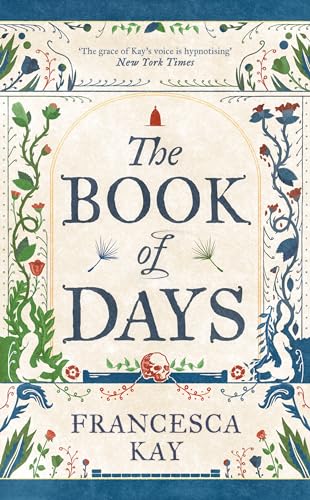The Book of Days
This literary gem recounts the story of a rural manor estate in Tudor England in 1546, where the fallout of King Henry’s Great Matter still resounds through Catholic communities. Medieval lives are dictated by Christian feast days—Easter, All Souls, Advent, Candlemas and more—and the seasons around which the villagers must construct their farming livelihood. Kay tells of suspicious times in a difficult era of religious strife, when speaking out of turn meant dire consequences.
Central to the story is Alice, Sir Richard’s young second wife; his daughter by his first marriage; his nephews; the elderly priest; a newly-hired young chantry priest; and other secondary characters, all drawn with consummate skill and around whom unspoken tension swirls. From his deathbed, Sir Richard directs a chantry chapel to be added to the old church to house an alabaster carved-effigy tomb dedicated to his immortal soul and those of his deceased wife, deceased children, and his present family. This presents a quandary for Alice, who refuses to have the remains of her baby daughter moved from where she is buried—sheltered under soil, flora and sky, rather than weighted down by stone.
The novel delves into religious conflict through the experiences of one family over the course of a year. Descriptions of the building of the chantry and alabaster carving glow with meticulous detail: stonework tracery windows set with vivid stained-glass scenes, religious artwork, colours mirroring the vibrancy of the natural world. Set at the cusp of a new age, Kay’s use of the calendar rotation as the narrative device allows us to witness the routine lives of Everyman, set against the broader context of human squabbles dimmed by the inevitability of time. Recommended to readers of iconic religious fiction, such as Claire Gilbert’s I, Julian.










